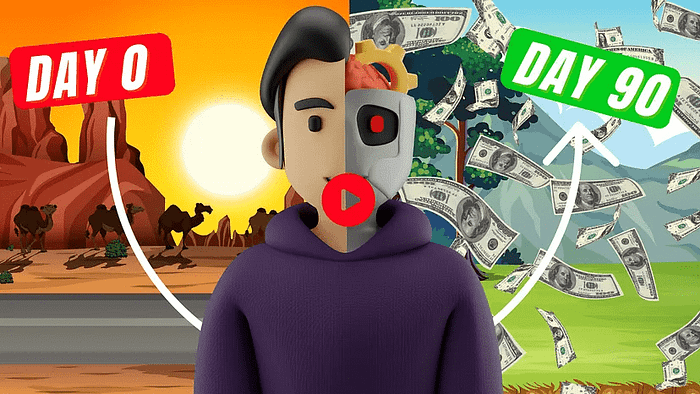8 Ways to Spend Money That Will Make You Happier
Spending money and happiness go hand in hand when you make thoughtful choices about where your dollars go.
The connection between our wallets and our well-being isn’t always obvious, but research shows certain purchases deliver more joy than others.
Most people think buying fancy things will make them happier, but science suggests experiences and helping others might be better investments.
When we understand the psychology behind spending money and happiness, we can make better decisions about our finances.
This article explores eight proven ways to use your money that research shows can boost your happiness and satisfaction with life.
Each strategy focuses on mindful spending that aligns with human psychology and what truly matters to most people.
By making intentional choices about wealth allocation, you can transform ordinary purchases into extraordinary happiness.
Let’s discover how to make your hard-earned money work harder for your emotional well-being and life satisfaction.
We strongly recommend that you check out our guide on how to take advantage of AI in today’s passive income economy.
Table of Contents
The Science Behind Spending and Happiness
The relationship between spending money and happiness has fascinated researchers for decades, revealing surprising patterns about human satisfaction.
Studies consistently show that after basic needs are met, simply having more money doesn’t automatically make people happier.
Instead, how we allocate our wealth plays a much bigger role in determining how much joy we get from our financial resources.
Psychologists have found that certain types of purchases create longer-lasting positive emotions than others, changing how we should think about value-driven purchases.
When researchers track people’s happiness after different types of spending, clear patterns emerge about what kinds of buying decisions lead to greater life satisfaction.
Understanding these patterns helps us make wiser choices about emotional spending and purchasing happiness through our everyday decisions.
The key insight is that spending money and happiness connect most strongly when our purchases align with our core values and psychological needs.
By applying these scientific insights, we can make smarter choices about how we use our financial resources to improve our lives.
1. Invest in Experiences Rather Than Things
Creating Memories That Appreciate Over Time
When considering spending money and happiness, research overwhelmingly suggests that experiences provide more lasting joy than material possessions.
Unlike physical items that quickly become ordinary, experiences like travel, concerts, or classes create memories that often become more valuable over time.
This happens because we tend to remember experiences through a positive lens, filtering out negative moments and preserving the highlights in our memory.
Experiences also become part of our identity and personal story, while material possessions usually remain separate from our sense of self.
The anticipation before an experience and the stories we tell afterward extend the happiness timeline far beyond what material purchases typically provide.
Social scientists call this “experiential purchasing,” and it’s one of the most reliable forms of purchasing happiness available to most people.
Even simple experiences like hiking in nature or attending local community events can generate significant happiness without requiring extravagant spending.
Mindful spending on experiences also reduces the risk of adaptation—the human tendency to quickly get used to new possessions and return to baseline happiness.
2. Buy Time Instead of Things
The Freedom Factor: Purchasing Your Most Precious Resource
One of the strongest connections between spending money and happiness comes from using financial resources to free up your time for activities you enjoy.
When people spend money on time-saving services like house cleaning, meal delivery, or virtual assistants, research shows their happiness levels often increase substantially.
This happens because time pressure and daily hassles are major sources of stress in modern life, directly impacting our overall well-being and satisfaction.
Purchasing time allows for more moments of connection with loved ones or pursuing hobbies that bring genuine pleasure and meaning to your life.
Studies show that even people with modest incomes benefit from prioritizing time-saving purchases over acquiring more material possessions.
The psychological benefit comes from reducing what researchers call “time famine”—the persistent feeling that there aren’t enough hours in the day.
Value-driven purchases that buy back your time represent one of the most efficient ways to convert money into genuine life satisfaction.
When considering wealth allocation, time-buying purchases often deliver the highest happiness return on investment across all income levels.
3. Spend on Others Rather Than Yourself
The Surprising Joy of Generosity
The link between spending money and happiness grows stronger when we direct our resources toward others rather than ourselves.
Research across cultures consistently shows that spending on others—whether through gifts, charitable donations, or treating friends to a meal—creates more happiness than equivalent spending on ourselves.
This phenomenon, sometimes called the “helper’s high,” activates reward centers in the brain that produce feelings of warmth and satisfaction.
Even small acts of generosity, like buying coffee for the person behind you in line, can trigger this positive emotional response.
Psychologists believe this occurs because social connection and contributing to others’ well-being fulfill fundamental human needs for belonging and purpose.
When practicing emotional spending through generosity, the happiness effect is often largest when we can see the direct impact of our contribution.
Mindful spending on others works best when we choose causes or people that have personal meaning to us rather than giving out of obligation.
The happiness benefit of giving to others appears across income levels, cultures, and age groups, making it one of the most universal ways to purchase happiness.
4. Invest in Personal Growth and Learning
Expanding Your Horizons and Capabilities
Another powerful connection between spending money and happiness comes from investing in developing new skills and expanding your knowledge.
When people spend on classes, workshops, books, or online courses that help them grow, they often experience increased confidence and satisfaction.
Learning new skills creates a sense of progress and accomplishment that material possessions rarely provide, offering an antidote to hedonic adaptation.
This type of value-driven purchase also opens new possibilities for career advancement, creative expression, or simply experiencing the world in richer ways.
The happiness from personal growth investments tends to compound over time as new capabilities lead to more opportunities and experiences.
Research shows that people who regularly invest in learning report higher levels of life satisfaction and tend to build more resilient psychological resources.
Mindful spending on personal development often provides both immediate enjoyment during the learning process and long-term benefits from new abilities.
Whether it’s learning to play an instrument, speak a new language, or master a craft, these investments in self-improvement create lasting happiness dividends.
From Consumer to Creator
Personal growth investments are particularly powerful when they transform you from a consumer to a creator in areas that interest you.
Learning to create your own music, art, writing, or even digital content connects spending money and happiness through a sense of autonomy and accomplishment.
The satisfaction of making something yourself often far exceeds the pleasure of purchasing similar items or experiences created by others.
This creative capacity provides ongoing opportunities for entering what psychologists call “flow states”—deeply engaging activities that create natural happiness.
Wealth allocation toward creative skills also tends to reduce dependency on consumption for entertainment, potentially saving money in the long run.
Many people find that the ability to create rather than just consume brings a deeper sense of meaning and purpose to their leisure time.
The happiness return on investment for creative skill development typically increases over time as abilities improve and creative possibilities expand.
These purchasing happiness opportunities represent some of the most sustainable forms of emotional spending available in our consumer-oriented culture.
5. Upgrade Your Everyday Experiences
Finding Joy in Daily Necessities
A strategic approach to spending money and happiness involves improving the quality of things you use every day rather than splurging on rarely-used luxury items.
Research shows that frequently-experienced small pleasures often contribute more to overall happiness than occasional major indulgences.
This might mean investing in a more comfortable mattress, higher-quality coffee, or better tools for hobbies you engage with regularly.
The psychology behind this approach relates to the total “happiness minutes” generated by each purchase over its useful lifetime.
A slightly more expensive but more comfortable office chair used daily will likely generate more total happiness than an extravagant vacation outfit worn once.
Mindful spending on everyday items works best when you identify the daily pain points or friction in your routine that could be improved with thoughtful purchases.
This approach to purchasing happiness avoids the common trap of buying impressive things that look good to others but don’t actually improve your daily experience.
Value-driven purchases of everyday items represent one of the most practical applications of the relationship between spending money and happiness.
6. Buy Social Connection
The Relationship Factor in Financial Decisions
Perhaps the strongest link between spending money and happiness comes from purchases that facilitate meaningful social connections with others.
Research consistently shows that strong social relationships are the single best predictor of happiness, even outweighing factors like income or health in many studies.
Wealth allocation that strengthens bonds with friends, family, and community tends to provide higher happiness returns than solitary consumption.
This might include spending on group activities, family vacations, dinner parties, or technology that helps you stay connected with distant loved ones.
The happiness effect is particularly strong when spending facilitates face-to-face interaction rather than digital or remote connection.
Emotional spending in this category works best when it creates shared experiences that strengthen relationships through mutual enjoyment and creating memories together.
Consider how your purchasing happiness strategies could create more opportunities for meaningful time with people who matter to you.
Mindful spending on social connection often requires less money than other types of purchases because the primary value comes from the relationship, not the expense itself.
Investing in Community Belonging
Beyond immediate relationships, spending money and happiness connect strongly through investments in community and belonging.
Research shows that people who allocate resources toward community involvement and social groups report higher levels of life satisfaction and purpose.
This might include membership in clubs, religious organizations, volunteer groups, or other communities that provide a sense of identity and belonging.
The happiness return tends to be highest when these communities align with your core values and provide opportunities for both giving and receiving support.
Value-driven purchases that strengthen community ties often create compound benefits through expanded social networks and support systems.
These community investments represent some of the most enduring connections between spending money and happiness available in our often-individualistic society.
The sense of belonging and mutual support that comes from community involvement provides psychological security that material purchases cannot match.
When considering emotional spending, few allocations deliver more happiness per dollar than those that strengthen your connection to meaningful communities.
7. Pay for Help with Your Most Dreaded Tasks
Strategic Outsourcing for Greater Well-being
A direct path to linking spending money and happiness is identifying and outsourcing the tasks you find most unpleasant or stressful.
Research shows that using financial resources to eliminate your most dreaded chores can significantly reduce daily stress and increase overall life satisfaction.
This approach to mindful spending requires honest self-assessment about which activities consistently drain your energy or create negative emotions.
For some people, this might mean hiring help for house cleaning or yard work, while others might benefit more from assistance with paperwork or technical support.
The happiness return is often highest when you outsource tasks that you both dislike and that take significant time or mental energy to complete.
This strategy represents a sophisticated approach to purchasing happiness by systematically removing negative experiences rather than just adding positive ones.
The psychological benefit comes from both eliminating dreaded tasks and redirecting that time and mental energy toward more meaningful or enjoyable activities.
Value-driven purchases that reduce your personal “misery index” often create more sustainable happiness than those focused solely on adding pleasure.
8. Invest in Health and Preventive Care
The Ultimate Return on Investment
Perhaps the most fundamental connection between spending money and happiness comes through investments in maintaining and improving your physical and mental health.
Research consistently shows that good health is one of the strongest predictors of happiness across age groups, cultures, and income levels.
Mindful spending on nutritious food, physical activity, preventive healthcare, and mental wellness often delivers the highest long-term happiness returns.
These investments work because physical well-being directly affects energy levels, mood regulation, sleep quality, and overall capacity to enjoy life.
The relationship between spending money and happiness is particularly strong when health investments address existing pain points or limitations in your daily life.
Value-driven purchases in this category might include a more supportive mattress if you have back pain, kitchen equipment that makes healthy cooking easier, or a fitness membership you’ll actually use.
The happiness return tends to compound over time as healthy habits maintain or improve your capacity to engage fully in life’s pleasures and meaningful activities.
When considering emotional spending priorities, health investments protect your ability to enjoy all other forms of happiness that your money might buy.
Mental Health: The Foundation of Happiness
Within the health category, spending money and happiness connect most directly through investments in mental well-being and emotional resilience.
Research increasingly shows that mental health may be even more strongly linked to happiness than physical health in many circumstances.
Wealth allocation toward therapy, stress-reduction tools, or mental health applications often provides significant improvements in day-to-day emotional experience.
The return on investment from mental health spending can be particularly high because emotional well-being affects every aspect of how we experience life.
Purchasing happiness in this domain might include professional counseling, meditation programs, or tools that help manage stress and improve sleep quality.
These mindful spending choices recognize that our subjective experience—how we feel moment to moment—is the ultimate determinant of our happiness.
Value-driven purchases supporting mental health work best when tailored to your specific challenges rather than following generic wellness trends.
Of all the connections between spending money and happiness, investing in the foundation of your mental well-being may provide the most fundamental returns.
Conclusion: Creating Your Happiness Spending Plan
The relationship between spending money and happiness becomes clearer when we look at these eight research-backed strategies together.
Each approach works by aligning our financial choices with fundamental human needs for connection, meaning, growth, and well-being.
The most effective wealth allocation for happiness combines elements from several categories rather than focusing exclusively on any single strategy.
Mindful spending requires regular reflection on which purchases actually increase your happiness and which ones fail to deliver lasting benefits.
The science of purchasing happiness continues to evolve, but the core principles remain consistent across cultures and income levels.
Value-driven purchases that align with your personal values and circumstances will always outperform generic luxury spending or status-seeking consumption.
By thoughtfully considering the connections between spending money and happiness, you can make financial choices that genuinely improve your quality of life.
The ultimate goal isn’t to spend more or less, but to spend better—directing your resources toward what truly matters for your well-being and life satisfaction.

We strongly recommend that you check out our guide on how to take advantage of AI in today’s passive income economy.




